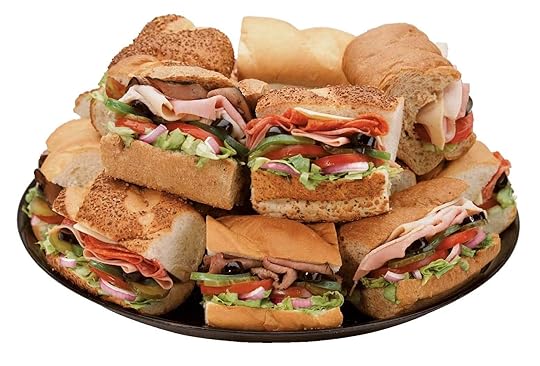Subplots
 Subplots
Subplots
Subplots are whole new aspects to conceive, insert and blend into your premise. They can add not only word count, but can have an echoing effect on the conflict, theme or premise you choose to write about. Subplots do not typically slide along independently of the main plot, because that fragments reader attention. This type of subplot can work in fiction, however. So, if you have an idea for a side-by-side story, don't abandon it just because it's rare.
For most other stories you will want the subplot to weave in and out of the main plot, intersecting, impacting and affecting the main plot and vice versa. So you must first figure out the reason the subplot would intersect with the main plot. To do this, let's borrow a technique from Donald Maass. Try listing your main and secondary characters and their goals, maybe add setting locations and see where these characters will cross one another's paths. Now, think of ways the secondaries can interact to shed light on what the mains are doing, help the mains, or make trouble for the mains. Or think of ways the mains can spin off ideas the secondaries can work with that will come back to haunt them later.
The impact of subplots should be indirect, but powerful. Subplots are very often about contrast. They shouldn't repeat the events of the main plot or only be there to provide comic relief. They should offer an alternate perception of the main conflict. Common subplots involve personal relationships of the mains. For example, in a detective novel, the detective is busy trying to find the serial killer before he strikes again. A subplot for him is his relationship with his girlfriend. Maybe she's pushing him to get married and because he can see the effects of a bad marriage in the profile of the serial killer, he's resisting the idea. The subplot impacts the main story.
A good subplot also embellishes a main story in a number of ways. The subplot can convey the theme because the main character may be too busy with action. A main character whose goal is to explore the Amazon River can be busy tangling with large snakes and lack of fresh water, while the subplot could have to do with negotiating with his belligerent native guide, who resents the intrusion of the explorer as much as he needs the work the explorer provides. These two story threads clash at the point of fighting for survival, which highlights the overall theme of man against nature and man against human nature.
A subplot can deepen characterization by exploring a main character's relationships and growth. If the main character is busy trying to persuade a record company to give him a contract for his rock band, the subplot could highlight the interactions between the band members that make it difficult for him to hold the band together long enough to record something. A subplot can work to show a contrasting point of view on an issue. The main character could be a privileged rich kid trying to win the love and approval of his disinterested parents while the subplot of the kid's best friend is about a poor kid from a loving home who wants to earn lots of money to help his family.
Subplots can also create and enhance the believability of plot twists. If you have plot elements that may be a bit difficult to believe such as a city guy who successfully escapes from the mob to start a new life, a subplot involving the mob still looking for the guy makes us believe he escaped successfully and at the same time adds tension as we wonder whether the mob will catch up to him as he tries to learn how to get along in his new small town neighborhood where people are kind and trusting.
Subplots need beginnings, middles, and ends, so don't just throw them in without thinking about plots for them. Just as your main character needs a goal and conflicts, the characters involved in your subplot need goals and conflicts. To take our example above of the mob, the mob sends a seeker to find the escapee. His goal is to find and kill the escapee, and he will be faced with obstacles he must overcome. He may also grow and change as a character, have his own climax where he makes a life-changing decision that resolves his conflict and, in turn, affects the ending of the main story.
Subplot events can occur offstage so that they don't take away from the main plot's action. In this case, they would be referred to, or be covered during introspection or dialogue rather than be live blow-by-blow scenes. They more often take place on-stage, especially if you want to push the main plot in a direction it might not be able to otherwise go. For example, when getting a secondary character to team up with a main, it might be necessary to give him his own subplot that forces him to take a chance with the main in an attempt to resolve his conflict.
Subplots should end right around the time when the main plot does and the resolution of one should ideally set up the resolution of the other. Most subplots, in one way or another, are about the contrasting and conflicting values of characters. As you think about your main characters and their goals, and then about their opposition and the opposition's goals, you may naturally have a nice, clean story conflict. But it's rare for any conflict to be black and white. There are always subtle nuances, the grays of the situation, to be explored. Subplots are a great way to enhance the flavor of your theme without going crazy trying to weave bits of complexity into your main plot.
Got questions about subplots? Ask away.
Interested in some fresh ways to handle dialogue click here for my Savvy Authors - starting next Monday, June 17th!
For some just-in-time ideas on how to handle pacing click here for my July workshop at Hearts Through History RWA workshop



